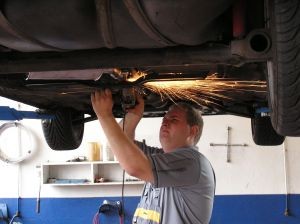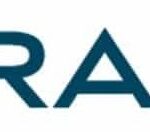For mechanics venturing into auto repair shop ownership, the transition from skilled technician to savvy business manager can be challenging. While expertise in vehicle repair is crucial, understanding the financial intricacies of running a business is equally vital. Among these financial aspects, grasping the concept of Cost of Goods Sold (COGS) is fundamental. With nearly 175,000 auto repair shops operating in the US, according to the Georgia Small Business Development Center, competition is fierce, and financial literacy can be a key differentiator for success. This guide will delve into what constitutes Cost of Goods Sold for an auto repair business, why it matters, and how to effectively manage it.
Understanding Cost of Goods Sold (COGS) in Auto Repair
Cost of Goods Sold (COGS) in the auto repair industry encompasses the direct costs attributable to providing repair services to customers. Essentially, these are the expenses directly linked to the services you sell. Understanding COGS is paramount because it directly impacts your gross profit, which is a critical indicator of your shop’s financial health. A clear grasp of COGS allows you to price your services effectively, manage expenses, and ultimately, ensure profitability. In the context of auto repair, COGS primarily breaks down into two main categories: material costs and labor costs.
Material Costs: The Price of Parts and Supplies
Material costs represent the expenses incurred for the tangible parts and supplies used directly in repairing customer vehicles. This is a significant portion of your COGS and includes:
- Vehicle Parts: This is the most substantial component, covering everything from brake pads and rotors to engine components and exhaust systems. The cost of these parts is directly tied to the specific repairs performed on each vehicle.
- Repair Supplies: Beyond major parts, various consumable supplies are essential for daily operations. These include fluids (oil, coolant, brake fluid), filters (oil, air, cabin), lubricants, cleaning supplies, and even small hardware like nuts, bolts, and clips.
- Subcontracted Services (if directly related to a specific repair): In some cases, you might subcontract specialized services like machining or windshield replacement. If these are directly linked to a specific customer repair and billed as part of your service, they can be considered part of material COGS.
Accurately tracking material costs is crucial. Efficient inventory management systems and diligent record-keeping are essential to monitor these expenses. For instance, if you purchase brake pads for $50 and charge the customer $80 for the part plus labor, the $50 cost of the brake pads contributes to your COGS. Managing relationships with parts suppliers to secure favorable pricing can significantly impact your material COGS and overall profitability.
 Mechanic in Auto Repair Shop Examining Vehicle Engine
Mechanic in Auto Repair Shop Examining Vehicle Engine
Labor Costs: The Technician’s Time and Expertise
Labor costs in auto repair COGS are a more nuanced aspect. The key consideration is whether you are directly paying technicians based on the jobs they complete. There are different approaches to considering labor as part of COGS:
- Direct Labor as COGS: If your technicians are paid on a commission basis or per job, meaning their pay is directly tied to the revenue generated from their labor, then their wages can be classified as a direct labor cost within COGS. For example, if you charge a customer $100 per hour for labor and pay your technician $25 per hour for that specific job, the $25 technician wage could be considered part of COGS.
- Labor as Operating Expense: Alternatively, if you pay your technicians a fixed salary or hourly wage regardless of the daily workload or specific jobs completed, their compensation is typically categorized as a Salary/Wage operating expense, not directly within COGS. In this model, labor is viewed as a fixed overhead cost rather than a direct cost of service for each repair.
The decision of whether to include labor in COGS depends on your accounting methodology and how your technician compensation structure is set up. If you choose to include direct labor in COGS, remember to factor in associated payroll taxes and benefits for a more accurate representation of your true labor cost. According to BizStats, industry averages suggest that labor costs, whether in COGS or operating expenses, are a significant portion of an auto repair shop’s financials.
Calculating and Managing Auto Repair COGS
To calculate your COGS, you would typically sum up your material costs and direct labor costs (if applicable) for a specific period (e.g., monthly or annually). The formula is generally:
COGS = Beginning Inventory + Purchases – Ending Inventory (for materials) + Direct Labor Costs
While the inventory aspect is more relevant for businesses selling physical products, in auto repair, it mainly applies to parts inventory management. For practical purposes in service-oriented auto repair, a simplified approach focuses on tracking material costs per job and direct labor costs if those are considered COGS.
Industry benchmarks, like the 46.72% average COGS of total sales reported by BizStats, can provide a general guideline. However, your ideal COGS percentage will depend on your pricing strategy, service offerings, efficiency, and location.
Effective COGS management involves several strategies:
- Optimized Parts Sourcing: Develop relationships with multiple parts vendors to compare prices and negotiate better deals. Consider using aftermarket parts where appropriate to offer cost-effective solutions to customers while maintaining quality.
- Efficient Inventory Control: Implement an inventory management system to minimize waste, reduce stockouts, and track parts usage accurately. Just-in-time inventory practices can reduce holding costs but require careful planning.
- Labor Efficiency and Productivity: Streamline shop operations to improve technician efficiency. Proper scheduling, efficient diagnostic processes, and ongoing technician training can maximize labor utilization and reduce labor costs per job.
- Waste Reduction: Minimize waste of materials and supplies through careful usage practices and proper disposal methods. This includes managing fluid usage, minimizing parts spoilage, and recycling materials where possible.
COGS vs. Operating Expenses in Auto Repair
It’s crucial to differentiate COGS from operating expenses in auto repair. While COGS are directly tied to providing repair services, operating expenses are the overhead costs of running the business, regardless of the volume of repairs. Examples of operating expenses include:
- Rent or Mortgage: The cost of your shop space.
- Utilities: Electricity, water, gas, internet, phone.
- Salaries and Wages (for non-direct labor): Technician salaries (if not in COGS), service writers, managers, administrative staff.
- Marketing and Advertising: Costs to attract new customers.
- Insurance: Business liability, property, and workers’ compensation.
- Administrative Expenses: Office supplies, software subscriptions, accounting fees.
- Depreciation and Amortization: Wear and tear on equipment and assets.
| Category | Cost of Goods Sold (COGS) | Operating Expenses |
|---|---|---|
| Definition | Direct costs of providing repair services | Overhead costs of running the business |
| Examples | Parts, repair supplies, direct technician labor (if applicable) | Rent, utilities, salaries (non-direct labor), marketing |
| Variability | Typically varies directly with service volume | More fixed, less directly tied to service volume |
| Impact | Directly affects gross profit | Impacts net profit after gross profit |
Understanding this distinction is vital for accurate financial analysis and management. COGS directly impacts your gross profit margin (Revenue – COGS = Gross Profit), while operating expenses are deducted later to determine your net profit.
Importance of COGS in Financial Projections
Accurately estimating and managing COGS is essential when creating financial projections for your auto repair shop. Potential lenders or investors will scrutinize your projections, and a realistic COGS estimate is crucial for demonstrating the financial viability of your business. Underestimating COGS can lead to inaccurate profit projections and potential financial shortfalls.
By carefully analyzing your anticipated material costs, labor costs (as COGS), and implementing effective management strategies, you can create more robust and credible financial projections. This, in turn, strengthens your business plan and increases your chances of securing funding or investment to launch or expand your auto repair shop. Understanding and proactively managing your Cost of Goods Sold is a cornerstone of building a profitable and sustainable auto repair business.

